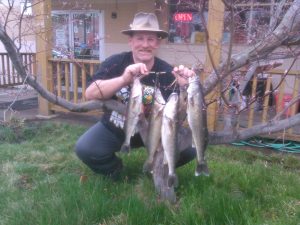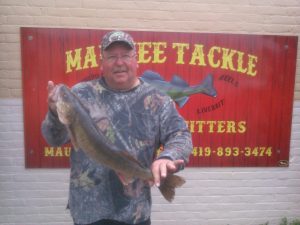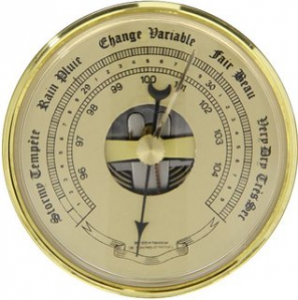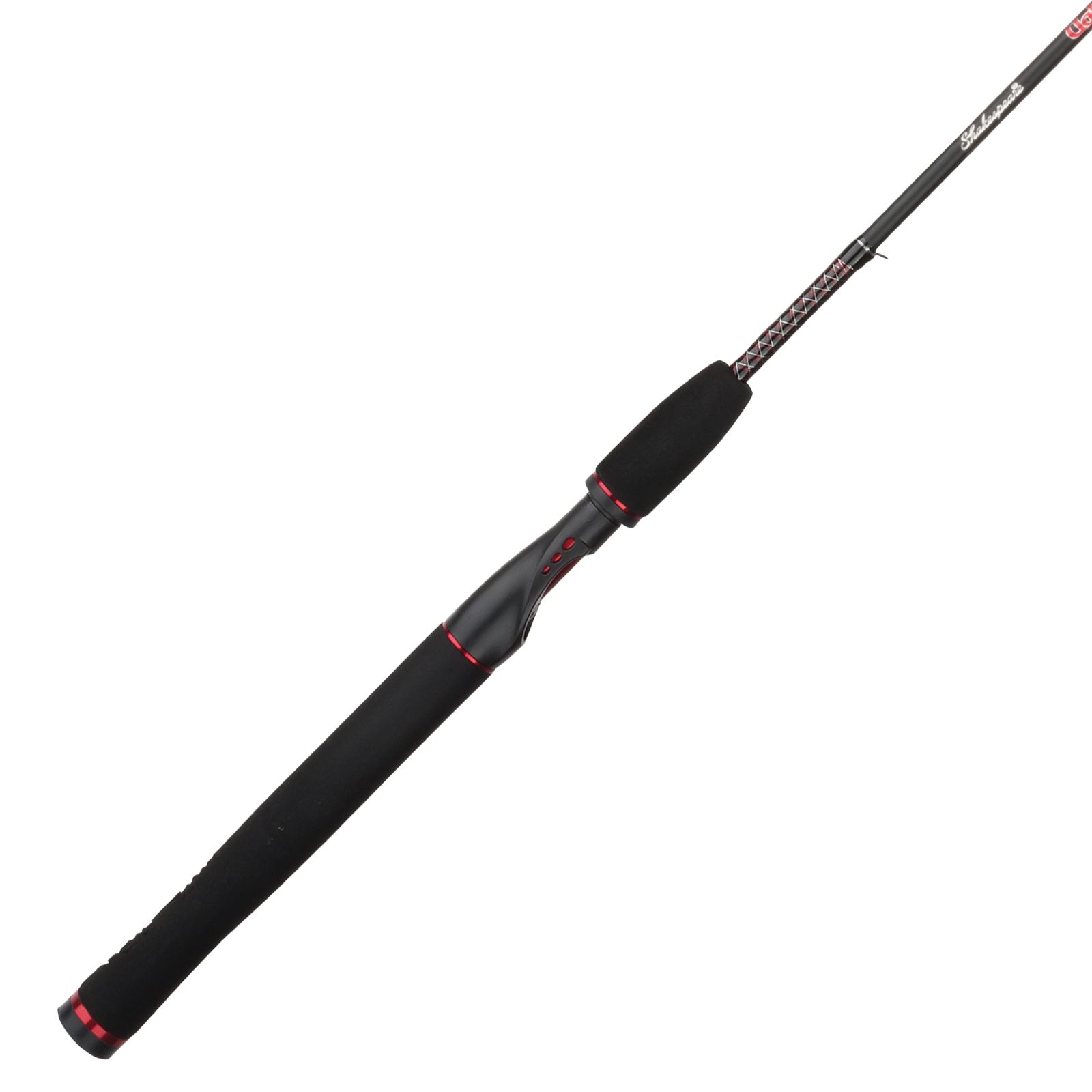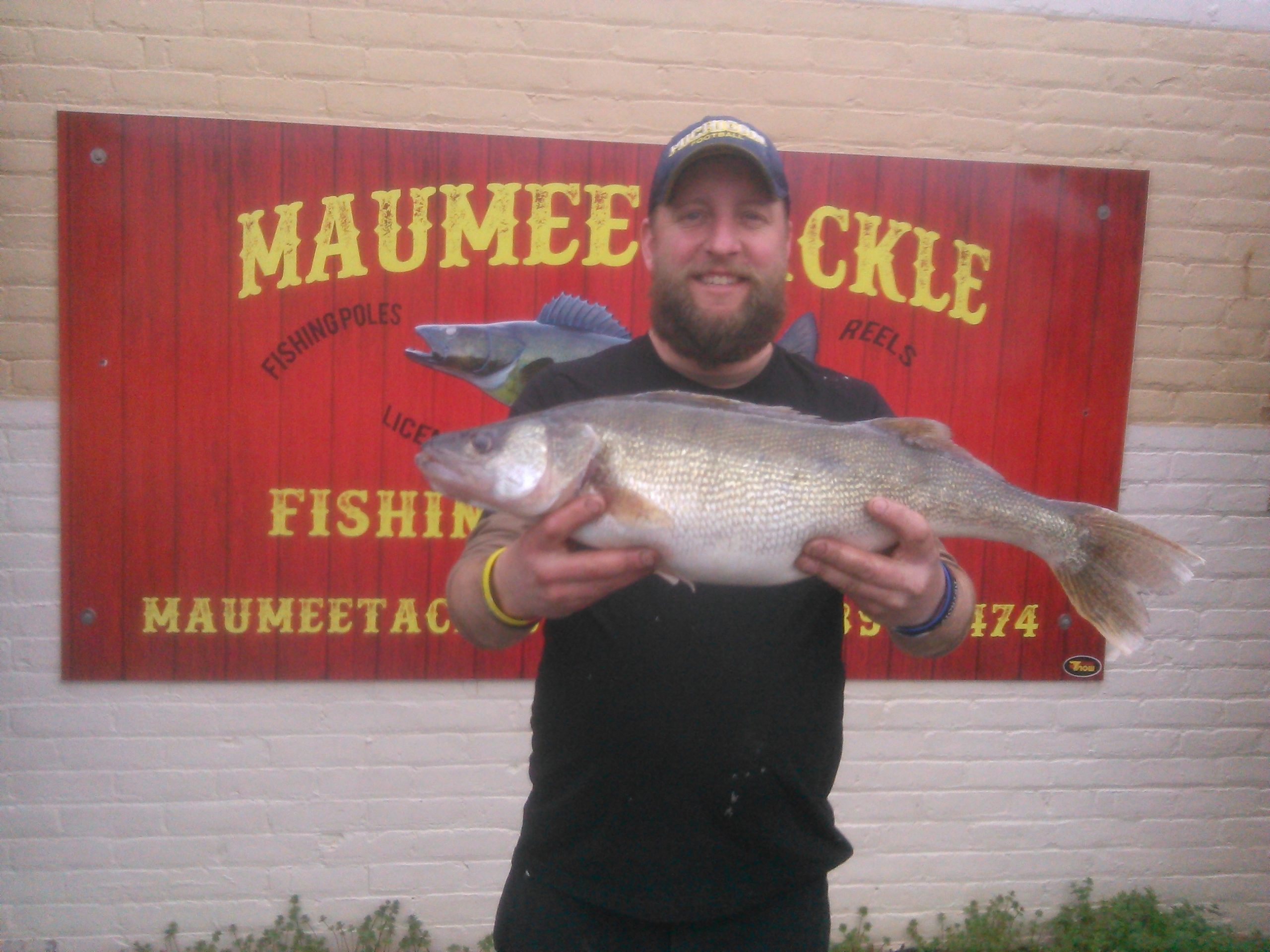
Water Level
581.5 and rising
Water Temperature
48
Barometric Pressure
29.62 inHg. rising
Water Clarity
5
*CLICK ON IMAGES TO ENLARGE*
Sunrise/First Cast-Â 6:47 am
Sunset / Last Cast- 8:19 pm
Weight:Â Â 5/8 oz- 3/4 oz
Colors: Darker more natural colors -Green head/ Xmas lights tail, Orange head/ Pumpkin seed tail, black head / apple seed tail, yellow head / motor oil gold tail.Â
Crossing to Bluegrass island is not permitted
Cold night still have the bite relatively slow. We saw multiple limits throughout the day and a TIE for the big Jack leader- still at 5.29lbs.
 Tow path along ford street and over at Jerome rd rapids were the two best places. As the water starts to rise again tonight we may see a few fish taken from white street and Orleans park.
Today we will have rain off and on all day. The river level dropped overnight but that rain that Fort Wayne, Indiana got will probably make its way to us some time today the river and will begin to rise throughout the day. Not to much , but enough to make crossing to Bluegrass island sketchy.
*Dates to remember*
This Saturday April 20Â is our 29th the annual Walleye Tournament. RAIN OR SHINE ITS ON.
Saturday May 11th is our 2nd annual White Bass Tournament.
How barometric pressure and spring storms affect fishing
Yesterday with the overcast day and popup storms around the area almost all anglers stayed home. We had a report of some good crappie being caught up near Grand Rapids. With theses storms and weather fronts swirling around the area the barometric pressure plays a big factor in triggering the bite. While that impending storm front might cause an angler without rain gear some discomfort, it can also trigger a hot bite. What many anglers know , but don’t actually understand, is that it’s the changes in barometric pressure associated with good and bad weather that turn the fish on and off .
The Good Times: As a storm system approaches, a low-pressure warm front rides up over the top of a high-pressure cold front, causing condensation to take place in the form of clouds. During the time the skies are clouding up, and right on through to the end of the storm, there is a slow and steady drop in barometric pressure that increases as the main body of the storm system approaches.Once the main body of the storm hits and moves through the area, rain, winds and sometimes thunder and lightning form along the frontal line. The pressure continues to drop until it bottoms out as the storm runs its course. The fishing should be good this entire time, although lightning and heavy rains on the water’s surface might spook fish.
The Bad Times: As the inclement weather moves out, the cold front–a mass of heavier, denser, high-pressure air–begins to rush in behind the low-pressure system. The result is usually windy weather with clearing skies, dropping temperatures and a very sharp rise in barometric pressure. Large storms will bring in stronger, more powerful and sustained winds, along with a much steeper, higher rise in barometric pressure than smaller storm systems will. It’s this clear, windy weather following rainy low-pressure systems that anglers dread, because it usually brings the fishing action to a standstill.
Have fun, be safe and good luck fishing

